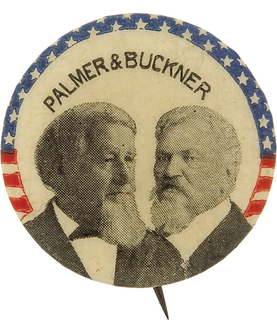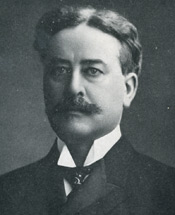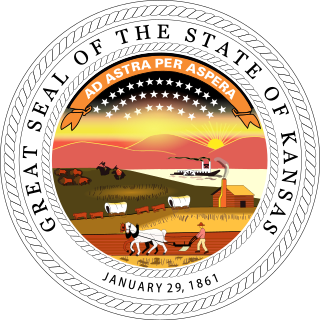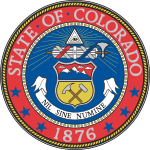
In the United States Electoral College, a faithless elector is an elector who does not vote for the candidates for U.S. President and U.S. Vice President for whom the elector had pledged to vote, and instead votes for another person for one or both offices or abstains from voting. As part of United States presidential elections, each state selects the method by which its electors are to be selected, which in modern times has been based on a popular vote in most states, and generally requires its electors to have pledged to vote for the candidates of their party if appointed. A pledged elector is only considered a faithless elector by breaking their pledge; unpledged electors have no pledge to break. The consequences of an elector voting in a way inconsistent with their pledge vary from state to state.

Alva Blanchard Adams was a Democratic politician who represented Colorado in the United States Senate from 1923 until 1924 and again from 1933 to 1941.

Bourbon Democrat was a term used in the United States in the later 19th century (1872–1904) to refer to members of the Democratic Party who were ideologically aligned with conservatism or classical liberalism, especially those who supported presidential candidates Charles O'Conor in 1872, Samuel J. Tilden in 1876, President Grover Cleveland in 1884, 1888, and 1892 and Alton B. Parker in 1904.

The National Democratic Party, also known as Gold Democrats, was a short-lived political party of Bourbon Democrats who opposed the regular party nominee William Jennings Bryan in the 1896 presidential election.

The 1896 United States presidential election in Iowa took place on November 3, 1896. All contemporary 45 states were part of the 1896 United States presidential election. Voters chose 13 electors to the Electoral College, which selected the president and vice president.

In the Chicago mayoral election of 1897, Democratic nominee Carter Harrison Jr. was elected, winning a majority of the vote and defeating independent Republican John Maynard Harlan, Republican nominee Nathaniel C. Sears, independent Democrat Washington Hesing, as well as several minor candidates. Harrison carried a 26.7 point lead over second-place finisher Harlan, a margin greater than Harlan's vote share itself.

The 1922 Michigan gubernatorial election was held on November 7, 1922. Incumbent Republican Alex J. Groesbeck defeated Democratic nominee Alva M. Cummins with 61.15% of the vote.

The 1906 Colorado gubernatorial election was held on November 6, 1906. Republican nominee Henry Augustus Buchtel defeated Democratic nominee Alva Adams with 45.59% of the vote.

The 1904 Colorado gubernatorial election was held on November 8, 1904.

The 1886 Colorado gubernatorial election was held on November 2, 1886. Democratic nominee Alva Adams defeated Republican nominee William H. Meyer with 49.66% of the vote.

The 1884 Colorado gubernatorial election was held on November 4, 1884. Republican nominee Benjamin Harrison Eaton defeated Democratic nominee Alva Adams with 50.74% of the vote.

The 1902 Kansas gubernatorial election was held on November 4, 1902. Republican nominee Willis J. Bailey defeated Democratic nominee W. H. Craddock with 55.45% of the vote.

The 1912 New Hampshire gubernatorial election was held on November 5, 1912. Democratic nominee Samuel D. Felker defeated Republican nominee Franklin Worcester with 41.07% of the vote.

The 1896 North Carolina gubernatorial election was held on November 3, 1896. Republican nominee Daniel Lindsay Russell defeated Democratic nominee Cyrus B. Watson with 46.52% of the vote. This was the only election in North Carolina between 1872 and 1972 in which the Republican nominee won the governor's office.

The 1896 Indiana gubernatorial election was held on November 3, 1896. Republican nominee James A. Mount defeated Democratic nominee Benjamin F. Shively with 50.93% of the vote.

The 1838 Massachusetts gubernatorial election was held on November 12.

The 1834 Massachusetts gubernatorial election was held on November 10.

The 1833 Massachusetts gubernatorial election was held on November 11.

The 1932 United States Senate elections in Colorado took place on November 8, 1932. Incumbent Republican Senator Charles W. Waterman announced that he would not seek re-election to a second term. Attorney Karl C. Schuyler won the Republican nomination to succeed Waterman and faced former Senator Alva B. Adams, the Democratic nominee, in the general election.





















